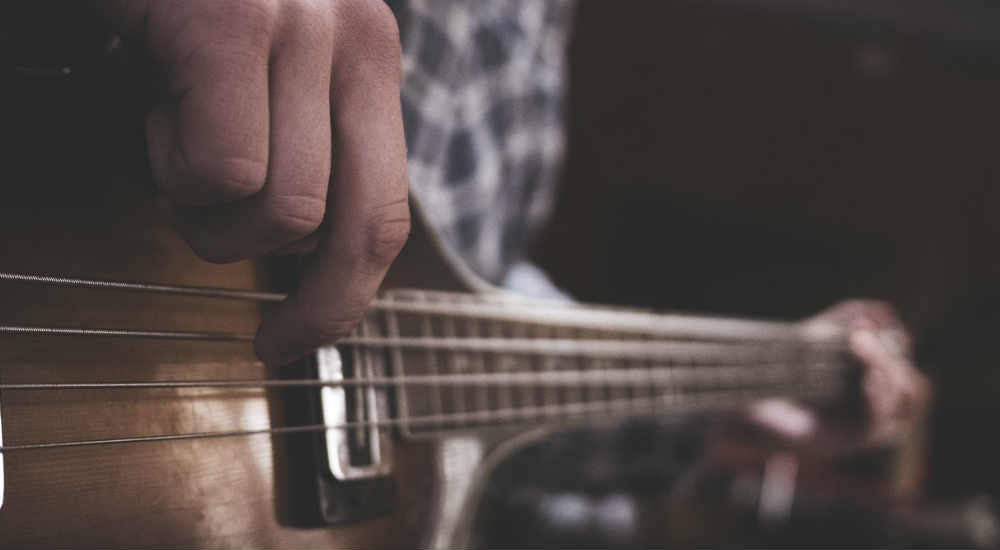Figure A has a straight ahead crotchet feel moving from two bars of C to two bars of F. In the key of C this could be thought of as the I chord moving to the IV chord. To add some variation we can try playing one bar of the root note and then moving towards our next chord such as Figure B. Here we have a bar of C crotchets and then a run of C-D-Eb-E which moves nicely towards F for the next bar. Now assuming these four bars just repeat (for the Verse for example) we need to get from F back to C. Bar four then plays F-A-Bb-B which leads us back to C. These ideas create movement towards the new chord and add some extra harmonic content by also using chromatic notes. Furthermore Figure C takes this idea one step further by varying the rhythm with quavers to add even further movement.
Many Soul styled bass lines utilise the 5th and 6th (G and A in the case of C Major). Let’s try adding them to the first bar (Figure D). Again this idea retains the sound of C (or a C chord) but adds colour with the G and A notes.
Finally let’s look at bar three and develop the F crotchets further. We can use the 5th (C) both below and above F and add some rhythm to give us Figure E. A big one for bass players in all styles the 5th definitely features prominently in Soul music too. The use of dotted quaver and semi quaver add some bounce to the feel and the 5ths create variation before moving to the last bar.
So in summary these ideas take a basic progression (just two chords in this case) and move from playing straight crotchet rhythms with root notes to developing more rhythmic and harmonic ideas. Movement from one chord to the next using diatonic notes, chromaticisim and varying rhythms is one of the big features of Soul styled basslines.
There is so much good soul music out there and plenty of specific bass players in this genre to dig your teeth into. James Jamerson, Bootsy Collins, Larry Graham, Donald ‘Duck’ Dunn and Louis Johnson are good starting points. Of course there is more to the soul sound then just playing the notes – you have to think about tone, your articulation, muting and lots more to really capture the sound. Let’s dig a little deeper next month and add some examples with more complex rhythms and chord progressions.
Revisit last month’s bass lesson here.






